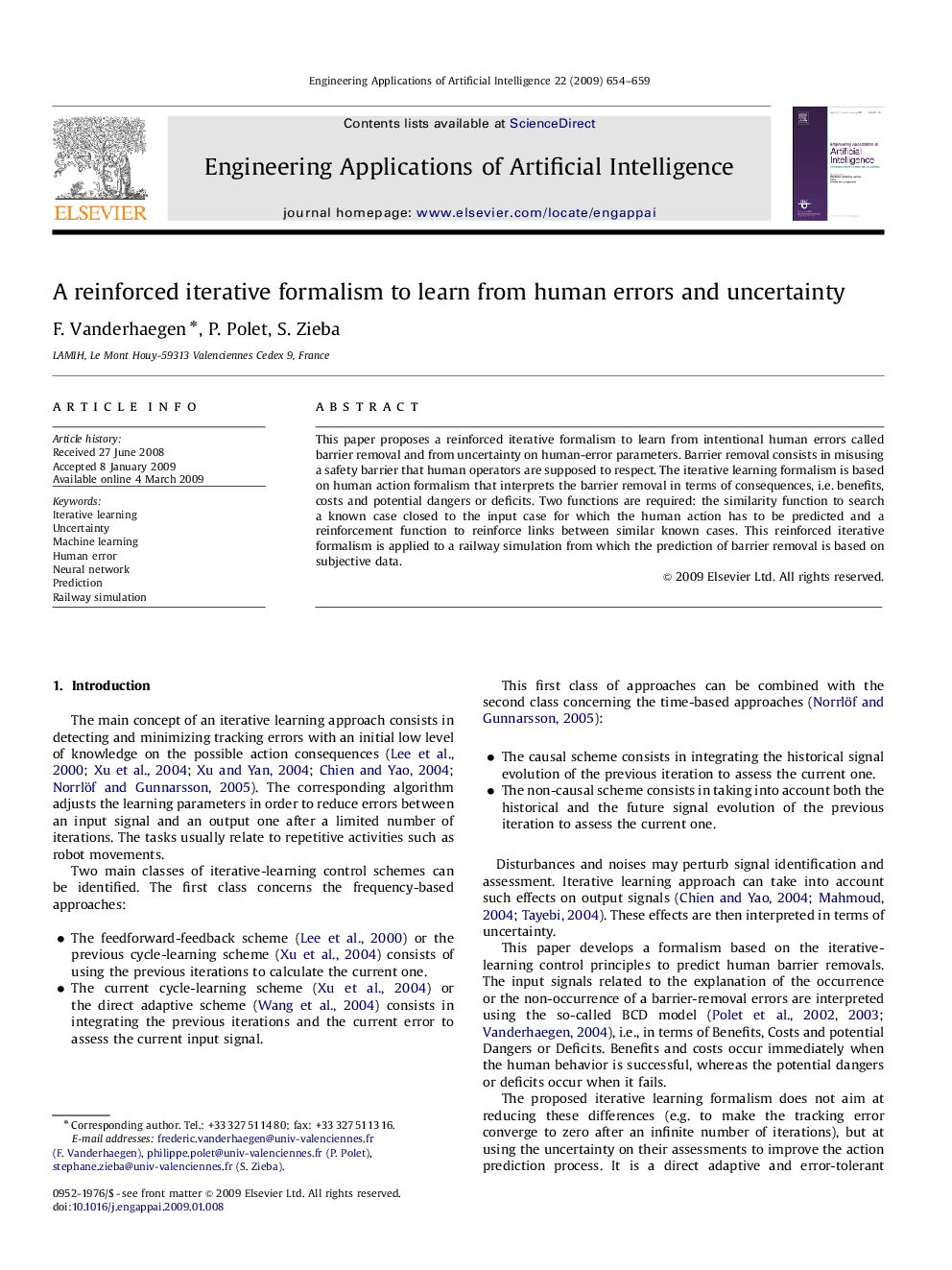| Article ID | Journal | Published Year | Pages | File Type |
|---|---|---|---|---|
| 381528 | Engineering Applications of Artificial Intelligence | 2009 | 6 Pages |
This paper proposes a reinforced iterative formalism to learn from intentional human errors called barrier removal and from uncertainty on human-error parameters. Barrier removal consists in misusing a safety barrier that human operators are supposed to respect. The iterative learning formalism is based on human action formalism that interprets the barrier removal in terms of consequences, i.e. benefits, costs and potential dangers or deficits. Two functions are required: the similarity function to search a known case closed to the input case for which the human action has to be predicted and a reinforcement function to reinforce links between similar known cases. This reinforced iterative formalism is applied to a railway simulation from which the prediction of barrier removal is based on subjective data.
